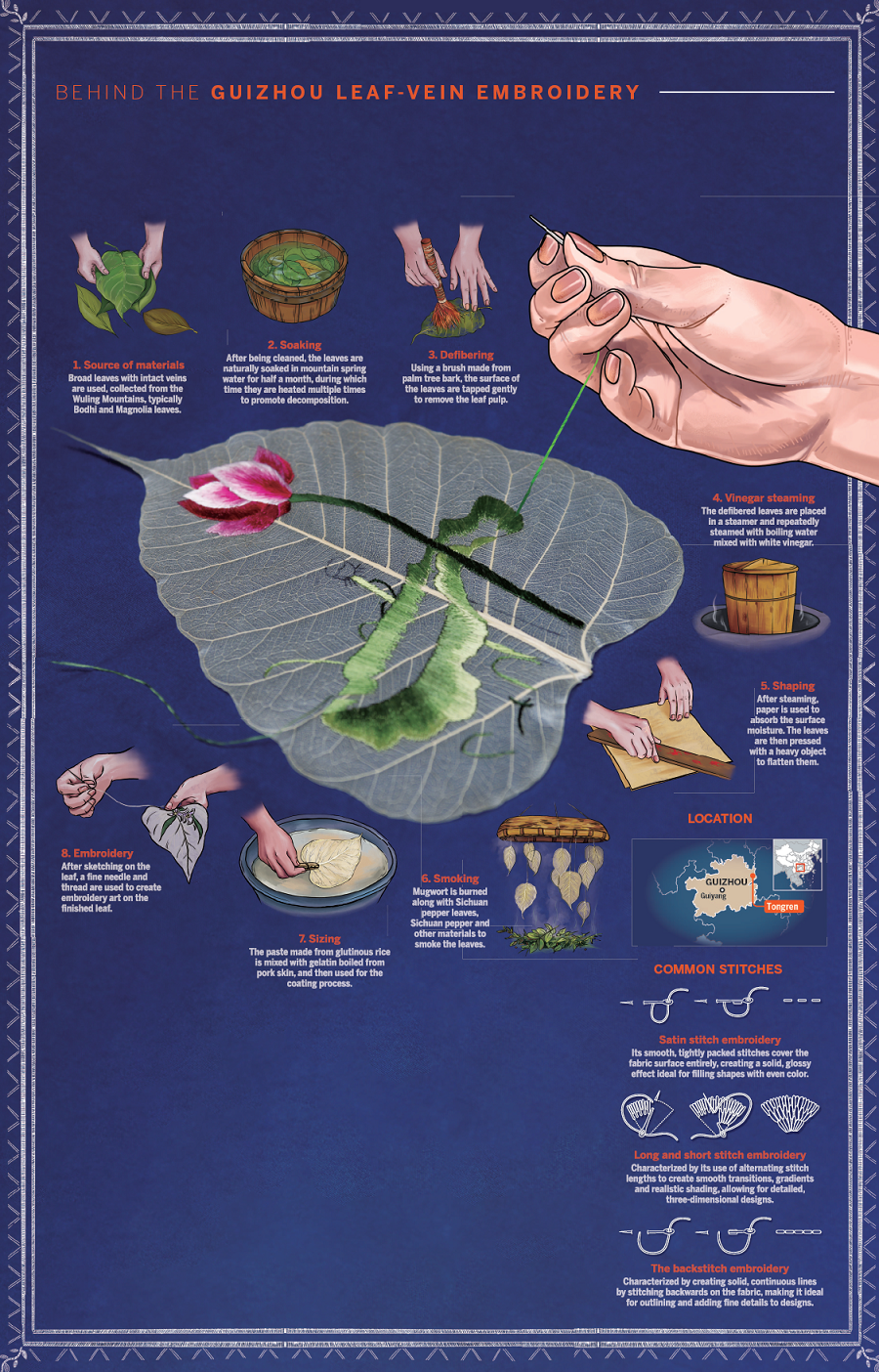Keeping old style alive
Editor's Note: Using a blend of words and visuals, this series explores unique communities and reveals the heart of China through food, architecture, craftsmanship, landscapes and traditions.

TIAN CHI/MUKESH MOHANAN/XU SHIRU/FOR CHINA DAILY
The exquisite craftsmanship of leaf-vein embroidery in Tongren city, Guizhou province, has made Guizhou embroidery one of the major styles of embroidery in China.
Leaf-vein embroidery first appeared in the Song Dynasty (960-1279), and has been used to transmit information by several ethnic groups in the southwestern region.
Yang Li, an inheritor of this technique, has incorporated the traditional embroidery of the Miao, Tujia and Dong ethnic groups into the leaves, showcasing the blending of traditional aesthetics and contemporary craftsmanship.
Leaf-vein embroidery artwork boasts a highly collectible and artistic value due to its complex production process. The key steps include selecting and drying the leaves, then designing and embroidering the pattern. Sourced from rare plants in the primitive forests of the Fanjing Mountain scenic area in Tongren, the leaves with harder veins that are about to fall in autumn serve as the best raw material.
After the leaves naturally soften over the next 20 days, they are warmed and fumigated to preserve them. When soft, the leaves are also extremely fragile. Patterns inspired by ancient stories and nature are drawn on the processed veins.
Yang says that in the last decade there have been barely 20 people in Tongren who can independently complete the whole leaf-embroidery process.
In 2011, Yang's leaf-vein embroidery work won the special "Guizhou artisan" award, and in 2012 she won several further awards including the gold prize at the First China Silver Embroidery Exhibition. Her works have won her fame and overseas orders, with the most precious pieces reaching as much as 7,000 yuan ($990).
Due to the laborious process and low yield of high-quality products, passing down the traditional skill faces challenges. "I have introduced this technique to universities, communities, villages and even selected skilled embroiderers to learn leaf-vein embroidery skills, but very few have been able to persevere," Yang said.
In 2011, she opened a processing factory and offered jobs to more than 500 female workers, rural women and people with disabilities. As a result, almost every embroiderer has a collection of handicrafts in their home that could fill a museum.
"I have a sense of mission and urgency. In my generation, I must do it better and pass on this craft," she said.
In 2022, Yang established the Guizhou embroidery intangible cultural heritage industry base, and has since utilized social media to showcase the traditional techniques of leaf-vein embroidery through short videos with her apprentice Yang Xinyu.
"Leaf-vein embroidery is a treasure. As a young person influenced by Teacher Yang Li, I am determined to inherit this craft and hope that more young people will return to their hometowns to inherit it." Yang Xinyu said.
Luo Siyang contributed to this story.
All rights Reserved. 京ICP备13028878号-8







